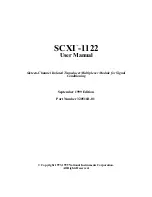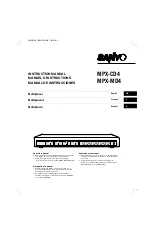
342-86400-498PS
Issue 1.2
April 2012
Page 36
Copyright
GE Multilin Inc. 2010-2012
Note:
The frames being forwarded from the “LAN” to the “WAN” switch are
competing for the GMII port‟s “add” bandwidth (1 Gbps) based on their
EtherType / source priority designation. The frames being forwarded from the
“WAN” to the “LAN” switch are competing for the GMII port‟s “drop” bandwidth (1
Gbps) based on their mapping priority designation.
Figure 24 shows the priority queues. Note that, for the Line ports, only the
queues for one of the four TDM pipes are shown.
NOTE: The "LAN" switch has
common ingress and egress
queues (total 4).
to/from
Left
Line Port
to/from
Right
Line Port
FRAME BUFFER
FRAME BUFFER
FRAME BUFFER
16
OUTPUT
PRIORITY
QUEUES
(PER TDM
PIPE)
16
OUTPUT
PRIORITY
QUEUES
(PER TDM
PIPE)
6-
7-
5-
4-
3-
2-
1-
0-
6+
7+
5+
4+
3+
2+
1+
0+
6-
7-
5-
4-
3-
2-
1-
0-
6+
7+
5+
4+
3+
2+
1+
0+
Egress
Ingress
Egress
Ingress
8
OUTPUT
PRIORITY
QUEUES
6
7
5
4
3
2
1
0
"WAN"
SWITCH IN
ETHER-1000
UNIT
Egress
Ingress
"LAN"
SWITCH
ON P/B
ET
6-7
4-5
2-3
0-1
to/from
Paddleboard
Access Ports
Queuing
At destination site, frames are
queued into 8 priority queues
based on Mapping Priority
designated at source site.
GMII port
6-7
4-5
2-3
0-1
ETHERNET FRAME
ETHERNET FRAME
Queuing
Higher priority and
“Pass-thru” frames
with same priority
are mapped first.
Routing
Selection of TDM
pipe is based on
source port's
D-PVLAN setting.
Selection of Line
port (L or R) is
based on minimum
number of hops to
destination.
Mapping Priority
(assigned for use within JMUX)
=7 for selct'd EtherType frames.
For other frames, may be set
(per port) for:
• Source Priority (with 7
6)
• Forced to N (N=1…6).
[Forcing Mapping Priority forces
Source Priority to same value.]
Source Priority
• Value in 802.1p/Q priority field.
• Value in „TOS‟ field of IP frame.
• No priority („native‟ frame), in
which case the user-configurable
port's
Default Priority
is assumed.
• Forced to N (N=1…6)
NOTE: Selected EtherType frames
are using top-priority queue.
EtherType is set per port.
Egress
Frames are outputted with
their original size and priority
information preserved or with
optionally added/removed
Q-tag (see Output Tagging
features). See NOTE below.
NOTE: Any tagged "EtherType" frames are
outputted with 802.1p/Q priority set to 7.
Any tagged frames whose Mapping Priority
was forced to N are outputted
with 802.1p/Q priority set to N.
Figure 24:
ETHER-1000 Priority Queues
There are 16 separate priority queues for each Line port‟s TDM pipe: 8 for the
“pass-thru” frames (designated as "+" queues) and 8 for the “add” frames
(designated as "-" queues). Which of the 8 available queues a frame is placed
into depends on its mapping priority (designated at its source ETHER-1000
paddleboard port). Note that each broadcast/multicast "add" frame is sent
through both left and right Line ports, while the unicast frames with known
destination are sent through one of the two Line ports only (based on which Line
port sees fewer ETHER-1000 hops to the destination).
The frames in the queue "7+" have the highest priority, those in "7-" have the
second highest priority, those in "6+" have the third highest priority, etc. Finally,
the frames in the queue "0-" have the lowest priority. The frames from higher
















































